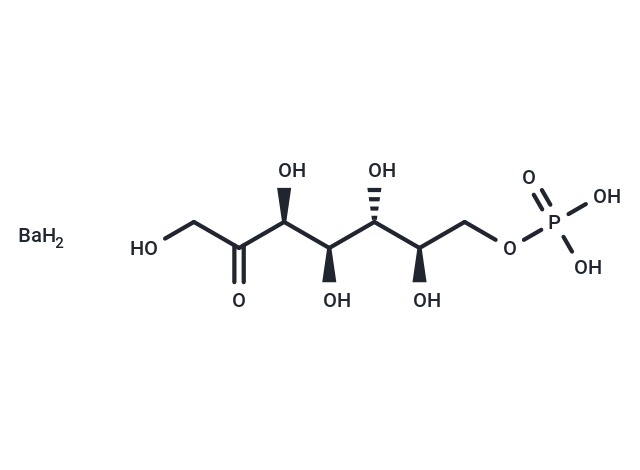Shopping Cart
Remove All Your shopping cart is currently empty
Your shopping cart is currently empty
D-Sedoheptulose-7-phosphate is an intermediate in the pentose phosphate pathway. [1] [2] In this pathway, transaldolase catalyzes the transfer of a three carbon dihydroxyacetone moiety from D-sedoheptulose-7-phosphate to glyceraldehyde-3-phosphate to generate D-fructose-6-phosphate . D-Sedoheptulose-7-phosphate is also an intermediate in carbon fixation in photosynthetic organisms, as well as in the biosynthesis of lipopolysaccharide, amino acids, secondary metabolites, and antibiotics. [3]

| Pack Size | Price | USA Warehouse | Global Warehouse | Quantity |
|---|---|---|---|---|
| 1 mg | Inquiry | 35 days | 35 days | |
| 5 mg | Inquiry | 35 days | 35 days | |
| 10 mg | Inquiry | 35 days | 35 days |
| Description | D-Sedoheptulose-7-phosphate is an intermediate in the pentose phosphate pathway. [1] [2] In this pathway, transaldolase catalyzes the transfer of a three carbon dihydroxyacetone moiety from D-sedoheptulose-7-phosphate to glyceraldehyde-3-phosphate to generate D-fructose-6-phosphate . D-Sedoheptulose-7-phosphate is also an intermediate in carbon fixation in photosynthetic organisms, as well as in the biosynthesis of lipopolysaccharide, amino acids, secondary metabolites, and antibiotics. [3] |
| Molecular Weight | 429.504 |
| Formula | C7H17BaO10P |
| Cas No. | 17187-72-3 |
| Smiles | [BaH2].OCC(=O)[C@@H](O)[C@H](O)[C@H](O)[C@H](O)COP(O)(O)=O |
| Relative Density. | no data available |
| Storage | Powder: -20°C for 3 years | In solvent: -80°C for 1 year | Shipping with blue ice/Shipping at ambient temperature. | |||||||||||||||||||||||||||||||||||
| Solubility Information | PBS (pH 7.2): 50 mg/mL (116.41 mM), Sonication is recommended. | |||||||||||||||||||||||||||||||||||
Solution Preparation Table | ||||||||||||||||||||||||||||||||||||
PBS (pH 7.2)
| ||||||||||||||||||||||||||||||||||||
| Size | Quantity | Unit Price | Amount | Operation |
|---|

Copyright © 2015-2025 TargetMol Chemicals Inc. All Rights Reserved.